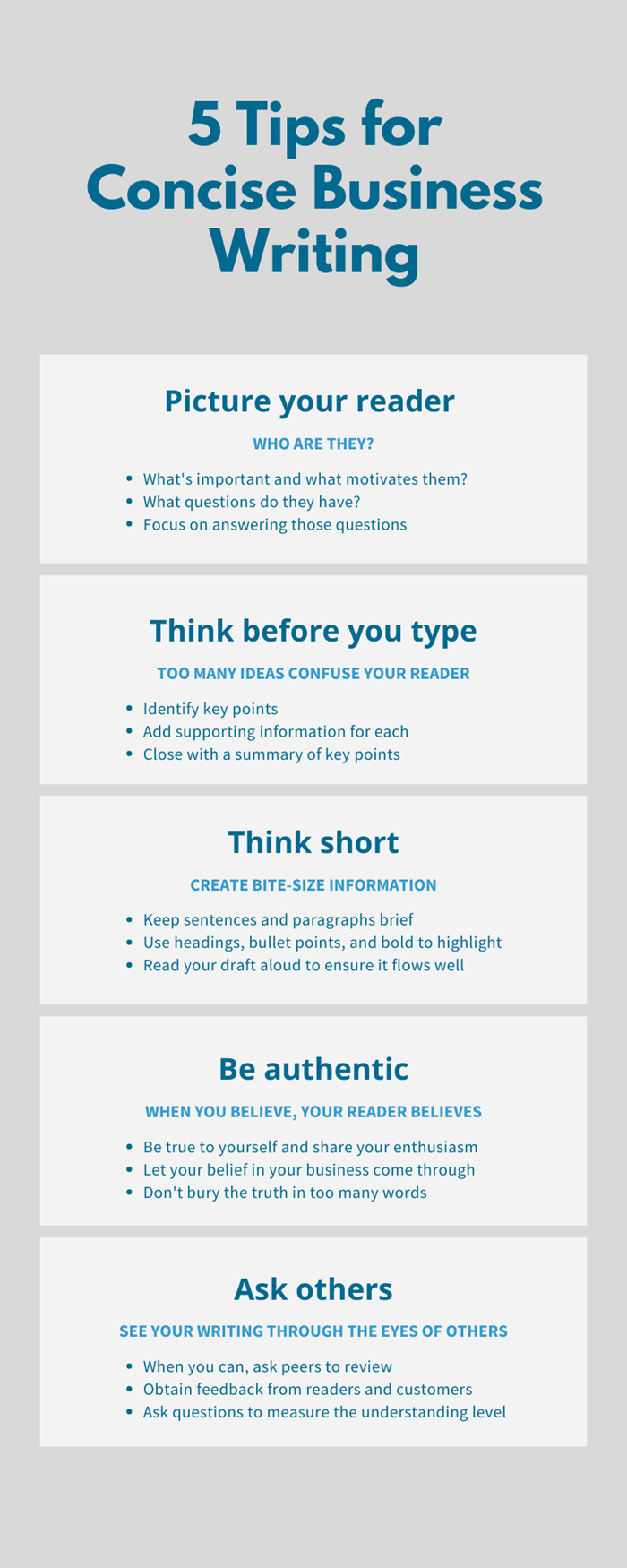Briefs: Improving Your Communication Through Clear And Concise Writing

Table of Contents
Understanding the Power of Concise Writing in Briefs
The Benefits of Brevity
Concise writing in briefs offers numerous advantages. Brevity leads to:
- Increased Comprehension: Readers grasp the core message quickly, minimizing misunderstandings.
- Reduced Ambiguity: Clear and direct language leaves less room for misinterpretations.
- Efficient Time Management: Both the writer and the reader save valuable time.
- Improved Productivity: Faster communication translates to quicker decision-making and action.
- Stronger Impact: A well-crafted brief leaves a lasting impression, unlike lengthy, rambling documents.
Lengthy, convoluted writing often overwhelms the audience, leading to information overload and decreased engagement. For example, a five-page report detailing a simple project update is far less effective than a one-page brief summarizing key findings and next steps. Brevity ensures your message resonates.
Identifying Your Audience and Purpose
Before crafting your brief, understanding your audience and your purpose is essential. Tailoring your brief to the reader ensures effective communication:
- A technical brief for engineers requires a different tone and level of detail than an executive summary for senior management.
- Clearly defining your objective – whether it's to inform, persuade, or request action – guides the content and structure of your brief.
- Anticipating reader questions and addressing them proactively ensures a comprehensive and satisfying experience.
Failing to consider your audience results in miscommunication and wasted effort. Always ask yourself: Who am I writing this for, and what do I want them to do after reading it?
Crafting Effective Briefs: Structure and Style
The Importance of a Strong Opening
The opening of your brief is crucial for grabbing the reader's attention and setting the stage for the rest of the document. A strong opening should:
- Clearly state the purpose of the brief.
- Hook the reader with a compelling opening sentence, outlining the problem or highlighting key findings.
- Immediately provide necessary context.
Consider different approaches: starting with the problem, presenting the solution upfront, or highlighting key findings immediately to pique interest and maintain engagement.
Structuring Your Information for Clarity
Well-structured briefs are easy to navigate and understand. Employ these strategies:
- Use headings and subheadings to break down information into digestible chunks.
- Utilize bullet points and numbered lists to highlight key information.
- Incorporate visual aids like charts and graphs where appropriate to enhance comprehension.
Maintain a logical flow, using transitions to smoothly guide the reader through different sections. Consider structures like problem-solution, chronological order, or a comparative analysis, depending on your content.
Writing Style for Concise Briefs
Effective briefs utilize a clear, concise writing style. This involves:
- Using active voice ("The team completed the project") instead of passive voice ("The project was completed by the team").
- Avoiding jargon and technical terms unless absolutely necessary and clearly defined.
- Keeping sentences short and to the point.
- Eliminating unnecessary words and phrases.
For example, replace "Due to the fact that" with "Because," and "in the event that" with "if." Proofreading and editing are essential for ensuring clarity and accuracy.
Examples of Effective Briefs Across Different Contexts
Briefs in Business
Effective business briefs include concise project proposals, impactful executive summaries, and clear progress reports. Avoid burying key information in lengthy narratives. Focus on results and actionable insights.
Briefs in Academia
Academic briefs, such as research abstracts and grant proposals, demand precision and conciseness. Focus on the core arguments, methodology, and findings. Use strong verbs and avoid unnecessary qualifiers.
Briefs in Personal Communication
Concise writing improves personal communication too. Keep emails and text messages brief and to the point, avoiding unnecessary details. Brevity is especially important in today's fast-paced digital communication.
Conclusion
Writing effective briefs requires a commitment to concise writing and clear communication. By understanding your audience, structuring your information logically, and employing a clear writing style, you can craft compelling briefs that leave a lasting impression. Mastering the art of brief writing significantly enhances your communication and boosts your overall productivity. Practice crafting compelling briefs today and improve your communication with effective briefs! For further resources on effective writing, check out [link to a relevant resource].

Featured Posts
-
 Where To Buy Cat Deeleys Mint Velvet Dress A Liverpool One Shopping Guide
May 23, 2025
Where To Buy Cat Deeleys Mint Velvet Dress A Liverpool One Shopping Guide
May 23, 2025 -
 Baba Olmak Burclarin Etkisi Ve Erkeklerin Rolue
May 23, 2025
Baba Olmak Burclarin Etkisi Ve Erkeklerin Rolue
May 23, 2025 -
 Fashion Heritage And Ballet This Weekends Events
May 23, 2025
Fashion Heritage And Ballet This Weekends Events
May 23, 2025 -
 Stitchpossible Weekend Will The 2025 Clash Break Box Office Records
May 23, 2025
Stitchpossible Weekend Will The 2025 Clash Break Box Office Records
May 23, 2025 -
 Fashion Heritage Ballet And Puns Your Weekend Events Guide
May 23, 2025
Fashion Heritage Ballet And Puns Your Weekend Events Guide
May 23, 2025
